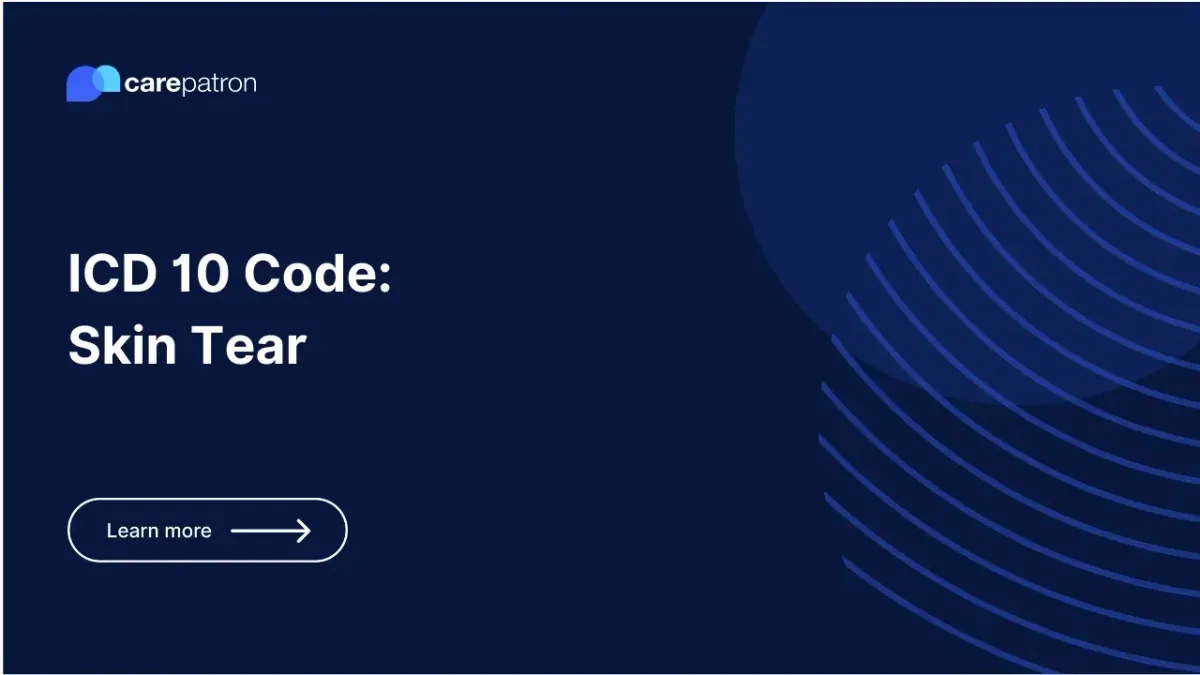
Skin Tear ICD-10-CM Codes
Discover accurate ICD-10-CM codes for skin tears, facilitating precise diagnosis and streamlined healthcare management.
Use Code
Commonly asked questions
The best treatment for a skin tear is to cleanse the wound with saline or a mild wound cleanser to prevent infection. After cleaning, apply a non-adherent, moisture-retentive dressing to protect the wound and promote healing. Avoid using adhesive bandages directly on fragile skin, especially on areas like the unspecified forearm.
Skin tears are classified into three types: Category 1 involves no loss of the skin flap, with the wound edges easily re-approximated. Category 2 involves partial flap loss, where the skin flap is partially detached but still salvageable. Category 3 results in complete skin flap loss, leaving the wound open and requiring more intensive treatment.
To heal ripped skin, gently clean the area with saline to remove debris and prevent infection. If possible, reposition the skin flap and apply a protective dressing to maintain moisture and facilitate natural healing. Regular monitoring and appropriate treatment help prevent complications, particularly in areas like the unspecified forearm.
EHR and practice management software
Get started for free
*No credit card required
Free
$0/usd
Unlimited clients
Telehealth
1GB of storage
Client portal text
Automated billing and online payments
